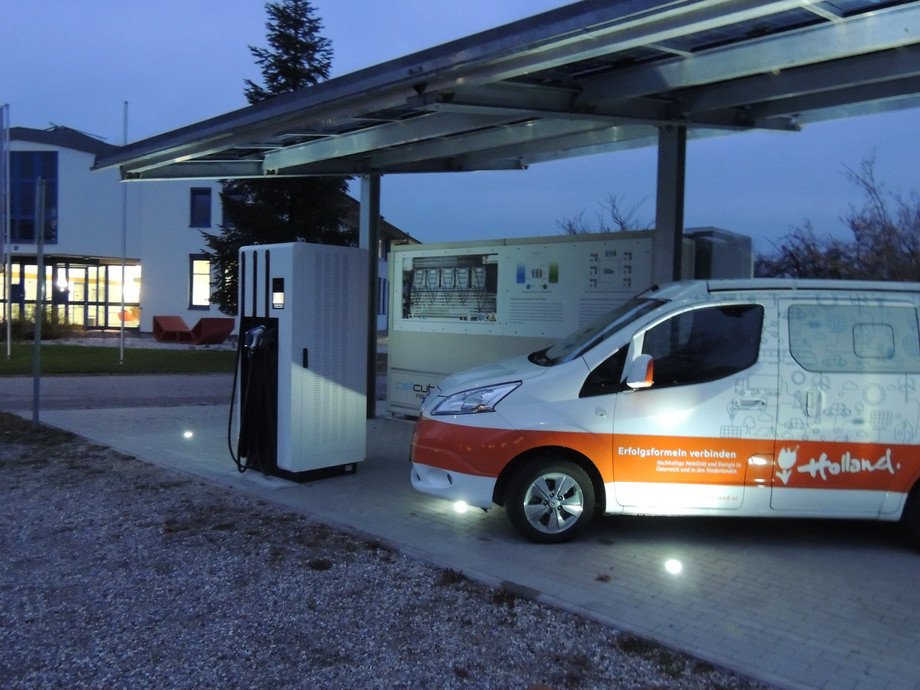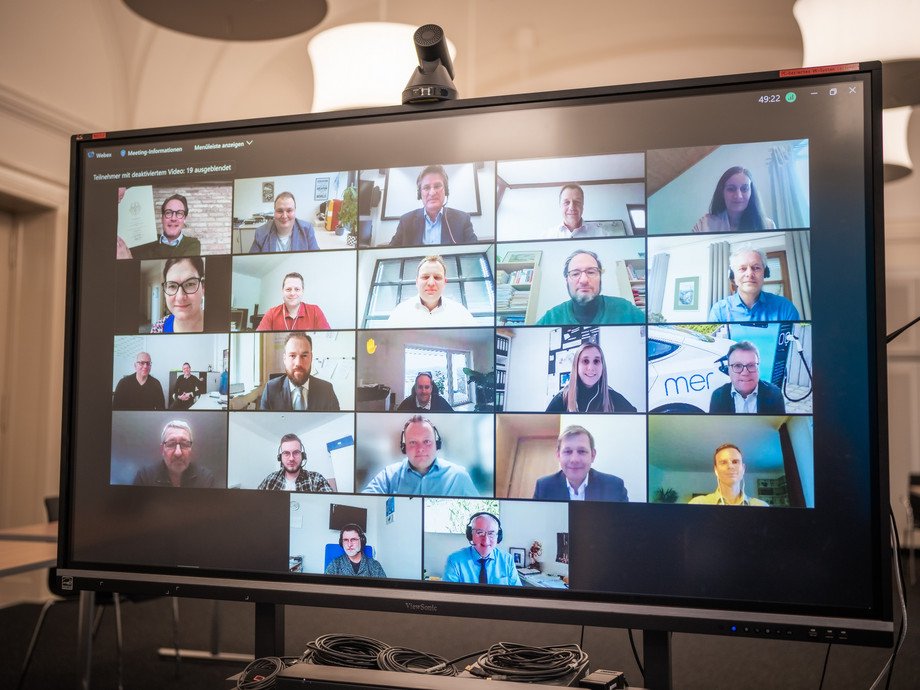

Together with nine partners, Landshut University of Applied Sciences has set out to develop a data-based scheme for the expansion of e-mobility charging infrastructure. The German Federal Ministry of Transport and Digital Infrastructure (BMDV) is backing the project with funds worth a total of nearly 4.2 million euros.
Expanding e-mobility and the requisite charging infrastructure is one of the European Union's key objectives. The key issues are rapid charging and power grid stability. To be able to devise the necessary concepts, extensive data is needed so that the effects on power grid stability, sustainability and the optimisation potential can be assessed. However, as hardly any pertinent studies have been carried out to date, only scarce data is available. This is precisely where the new research project Open Mobility Electric Infrastructure (OMEI) under the supervision of Landshut University of Applied Sciences comes in. The project team, which consists of ten institutions and businesses, aims to create a freely available database that can be used to plan a sustainable, regional charging infrastructure and assess concepts for the smart use of electric vehicles (EVs). Building on this, the consortium also intends to develop optimal ecological, economic and technical solutions for charging infrastructures in the European transport network that combine regional renewable energy sources with sustainable energy storage. Its ambition is to create a data-based concept that can be applied to Europe and sets out a roadmap for sustainably and cost-effectively expanding electromobility. The German Federal Ministry of Transport and Digital Infrastructure is backing the project with funds worth a total of nearly 4.2 million euros.
European transport networks under pressure
"The necessary expansion of the EV charging infrastructure is putting an enormous strain on the European transport and electricity networks," explains project manager Professor Karl-Heinz Pettinger, scientific director of the Energy Technology Centre (TZE) at Landshut University of Applied Sciences. "To meet the demand for electricity, we need rapid charging systems on the main transport routes across Europe," he says and acknowledges that network expansion is very resource-consuming. That is why it is important to create sustainably and power-grid-friendly charging structures and to use more regional renewable energy sources.
Smart charging infrastructure using AI
As a first step, researchers want to collect charging, user, energy and transport data so as to be able to compute the effects of a smart charging infrastructure on the energy transition. For this purpose, the team is setting up demo facilities that combine rapid charging stations with hybrid energy storage systems along a European main transport route (along the A3 motorway, for example) in two model regions. More regional energy sources could become available to charge e-cars, and a set-up could emerge where the energy storage systems serve as power buffers. This would ease the strain on the European transport network and cut the costs needed to expand the charging infrastructure across the regions. The team is also planning a third facility for end users that operates bidirectionally, meaning it can be used to charge and discharge e-cars. "With this vehicle-to-home version we want to tap the storage capacities available in stationary vehicles and thus develop network-based charging and discharging scenarios using artificial intelligence," says Pettinger. Based on these two approaches, the team eventually wants to come up with a holistic concept for a sustainable charging infrastructure.
Creating awareness in society
The researchers will use the collected data to develop simulation models in an effort to devise and optimise site-independent and economical operating strategies. In the end, the generated data will be made available via open data portals. Furthermore, the consortium wants to gain acceptance for the necessary changes by creating an awareness for the topic through active citizen participation. To ensure transparency, the results will be published in a user app.
Passau sub-project has its focus on the database
The project partners are engaged in a close exchange to ensure that the project is implemented as planned: Whereas the battery manufacturers JB and FENECON and the charging station operator MER are responsible for construction and operation of the energy stores and for the rapid charging stations, respectively, the Energy Technology Centre (TZE) along with HEITEC are in charge of setting up the system and developing the strategies for operation of the charging infrastructure and the energy stores. Over and above that, the Energy Technology Centre (TZE) has responsibility for the simulation models along with the University of Passau and is testing the vehicle-to-home applications. Dr. Armin Gerl, scientific project coordinator for the Chair of Distributed Information Systems, emphasises that "only by creating an extensive and permanently available database can AI-based system simulations be developed and the EV charging infrastructure be optimised in Europe. That's the focus of our sub-project". Based on the technical specifications, Technagon is developing a bidirectional wall box for vehicle-to-home applications. TZE, IL and Technagon are validating and testing this application at the various locations and on the test vehicles. Using the grid, and smart meter data provided by EVG, these operating strategies are being validated and optimised for V2G applications. Ultimately, the consortium will develop an operating concept for vehicle storage systems (V2G/V2H).
Sustainable energy supplies for e-mobility
The project's overall goal is to help expand e-mobility, prevent power grids from overloading and give citizens the possibility of using sustainable e-vehicles. Professor Kosch and Professor Sauer both rate the project's technological innovation power very highly: "The data-based optimisation of EV charging infrastructure and the realisation of vehicle-to-home and vehicle-to-grid concepts all represent a major milestone for a viable, sustainable mobility system in Germany," says Professor Kosch. Professor Sauer adds: "The use of AI methods to enhance energy efficiency in vehicle-to-home networks has an enormous potential, and the project results will be highly relevant for the region's energy ecosystem."
The Open Mobility Electric Infrastructure (OMEI) project will be running until the end of 2024 and is being implemented by Landshut University of Applied Sciences in cooperation with nine partners. The project is managed by Professor Karl-Heinz Pettinger, the scientific director of the Energy Technology Centre (TZE) at Landshut University of Applied Sciences. The German Federal Ministry of Transport and Digital Infrastructure is backing the project with funds worth nearly 4.8 million euros.
Figure 1: To promote electromobility we need to expand Europe's charging infrastructure. Photograph: Landshut University of Applied Sciences
Figure 2: At a digital event held in December 2021, Germany's then Federal Minister of Transport Andreas Scheuer (top left) held out the possibility of making funds available for the project. Screenshot: Landshut University of Applied Sciences
| Principal Investigator(s) at the University | Armin Gerl (Lehrstuhl für Informatik mit Schwerpunkt Verteilte Informationssysteme) Prof. Dr. Tomas Sauer (Institut für Softwaresysteme in technischen Anwendungen der Informatik (FORWISS Passau)) |
|---|---|
| Project period | 01.01.2022 - 31.12.2024 |
| Source of funding |

BMDV - Bundesministerium für Digitales und Verkehr
|
| Projektnummer | 45KI10B021 |